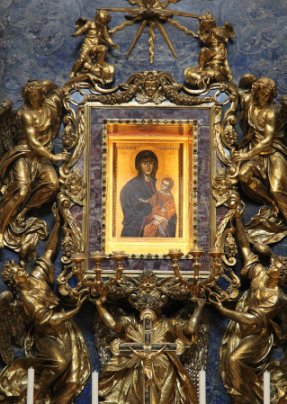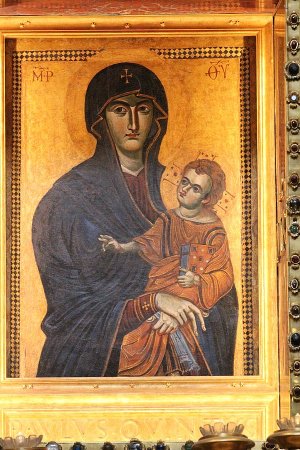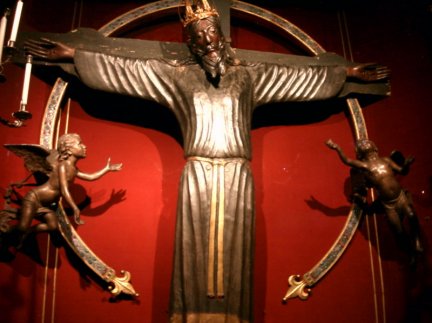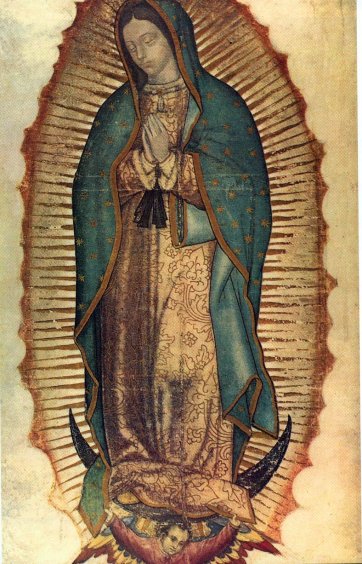2 Painted by saints

How did the legend of St Luke as an artist arise? In the bible
he is mentioned as a physician. The earliest references to him as an
artist came in the 8th century, and the legend caught on, as is
demonstrated by Rogier van der Weyden’s painting above. One suggestion
is that it came as a defence against Byzantine iconoclasm – if an
artwork was produced by a saint, particularly one as important as the
Apostle Luke, it could not be destroyed. Another theory says that, as a
physician, he would understand human anatomy and would therefore be well
placed to paint images of human figures.
Legends swirl around the first image below, from the Church of
St John Lateran in Rome. It is said that the Virgin Mary commissioned
Luke to paint an image of Christ.
An
extended version of the story says that before he could get round to it
an angel started it for him. It arrived in Rome c 700 from Jerusalem,
and has been treasured ever since.
The second image is also in Rome. The
Salus Populi Romani,
(Salvation of the Roman People) is in the church of Santa Maria
Maggiore. The legend tells us that the Virgin told Luke the details of
the life of Christ while he was painting her, which enabled him to write
his gospel. St Helena acquired it in Jerusalem, and brought it back to
Jerusalem in the 4th
century. Examination suggests a much later date, but, it is pointed out,
the image has been repainted over the centuries.





Fresco
of the Annunciation, church of Santissima Annunziata, Florence.
The church was founded in 1250 to serve the Servite order. In 1252 Friar
Bartolomeo was commissioned to paint an image of the Annunciation. He
struggled to create a satisfactory image, especially the face of the
Virgin, and, it is said, prayed to her for help. He fell asleep: when he
woke up, he discovered that angels had completed the image. It became
much revered, and a marble tabernacle was provided by the Medicis.

Our Lady of
Guadeloupe
This is a Mexican image dating from 1531. After meeting an apparition of
the Virgin a number of times, Juan Diego, a Mexican Peasant, discovered
that a miraculous image of the Virgin had a appeared on his cloak. This
is a rather simplified version of the story: the Wikipedia account is
very good. The shrine containing the image, in the Basilica of Our Lady
of Guadeloupe in Mexico, is one of the world’s most revered Catholic
shrines.
